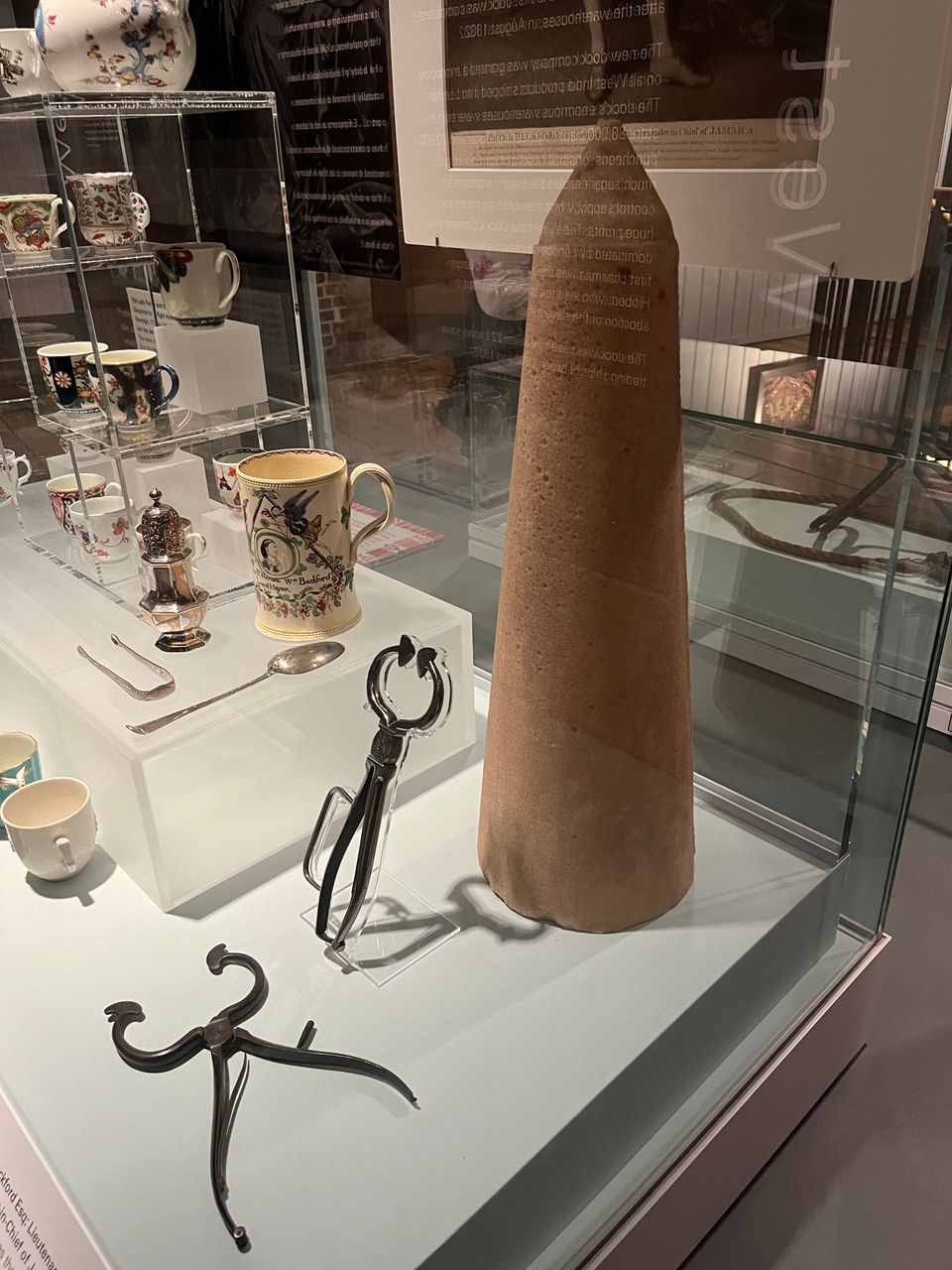From Dove Cottage to Docklands

On this day: 5th February 1805
What does a Blue Badge Tourist Guide do when they go away for a few days? The answer is they can’t help but unravel mysteries and find connections with their home patch. So here’s my sweet story with a tragic ending about the unexpected links between my recent visit to the Museum of London Docklands, my childhood day out near Abergavenny in South Wales and much closer to home in the Lake District - Dove Cottage in Grasmere.
A few weeks ago I was visiting family in London and had the opportunity to travel on the DLR (Docklands Light Railway) and go to the Museum of London Docklands which is near Canary Wharf. My inner child always hopes to grab the seat at the very front of the first carriage as these metro style trains are driverless, alas it’s yet to happen - someone always beats me to it. I digress…
At the museum I was drawn to a display about importing sugar and how the hands of the West India Quay dockers were cut by its gritty texture and the horrific story of people being enslaved and tortured on sugar plantations so that the sweet-toothed wealthy could enjoy the end product. Thomas Clarkson (1760-1846) got a mention for the part he played which led to the abolition of slavery . When he lived at Eusemere overlooking Ullswater in the Lake District he was friends with the Lakes poet William Wordsworth and his sister Dorothy.
In the photo you will see a shiny silver container with a perforated lid so you could shake out the sugar. It's called a sugar caster. In all the years of baking with caster sugar I now understood the derivation of its name. Also in the display case is a tall "loaf" of sugar, sugar cutters and sugar "nippers". If you go to Dove Cottage in Grasmere, once the family home of the poet William Wordsworth, you will see a pair of sugar cutters. They look like a cross between scissors and tongs. I remember as a child we had a family outing to walk up what was to me a huge and mighty mountain at 596 metres high, called the “Sugar Loaf” in South Wales (near Abergavenny, read on…) - I had never considered what an actual sugar loaf might be. Mystery solved.
Although the Museum of London Docklands is located on the historic West India Quay it has a section dedicated to the “Honourable East India Company” established in 1600. William Wordsworth’s younger brother John was a successful captain of merchant ships working for the East India Company in the late 1700’s and early 1800's.
Brother and sister, William and Dorothy Wordsworth, moved into Dove Cottage in Grasmere just before Christmas 1799 and were joined soon afterwards by their sea-faring younger brother John who stayed with them until the following October. He often visited and when William and his wife Mary had their first child in June 1803, they named the baby John. He continued to visit the Wordsworth’s family home in Grasmere until what turned out to be his final voyage.
On 1st February 1805 John set sail from Portsmouth as Captain of “The Earl of Abergavenny”. He was an experienced captain and now he was in command of one of the largest merchant ships ever built. It was carrying a very valuable cargo including porcelain and barrels of money and embarking on an 18 month journey to India and China. Within days the combination of a tricky coastline, bad weather and pilot error had caused confusion and disaster struck as the ship hit rocks, ripping a hole in its hull. The captain and his crew managed to set sail again aiming for the safe haven of Weymouth but the ship began to sink. Many desperately climbed the rigging in an attempt to avoid drowning in the cold waters of the English Channel, too risky to attempt a swim to the shore. Help came from smaller boats, saving as many as they could in the shallow but rough sea but Captain John Wordsworth refused to be rescued, determined to be the last man on board, it was the Captain’s final duty. In the darkness the ship sank with 263 people losing their lives on this day in 1805, the 5th February, including the Captain aged just 32.
In March 1805, a month after receiving the devastating news which had come through in a letter from elder brother Richard to William, their sister Dorothy Wordsworth wrote about her grief in a letter to her friend Jane Marshall (nee Pollard). “He loved our cottage, he helped us to furnish it” and “I can turn to no object that does not remind me of our loss”. On a more positive note she adds “Yet, the time will come when the light of the setting Sun upon those mountain tops will be as to heretofore a pure joy - not the same gladness, that can never be - but yet a joy even more tender”.
When the siblings were children they mourned the loss of both their mother and their father, but now the “set was broken” as William put it yet Dorothy dares to hope for happier times.
Six weeks after John drowned his body was recovered and buried at All Saints Church, Wyke Regis, Weymouth on the south coast of England. A memorial plaque inside that church was erected in 2005 to mark the 200th year since his death. In the graveyard of St Oswald’s Church in Grasmere in the Lake District you can see a memorial stone to Captain John Wordsworth.
Do join me for a visit to Wordsworth Grasmere, a fabulous state of the art modern museum and the re-imagined family home, Dove Cottage. It’s as if the family had just popped out for a moment.
On this day ... 5th February 1805
